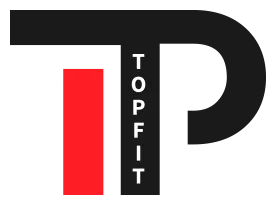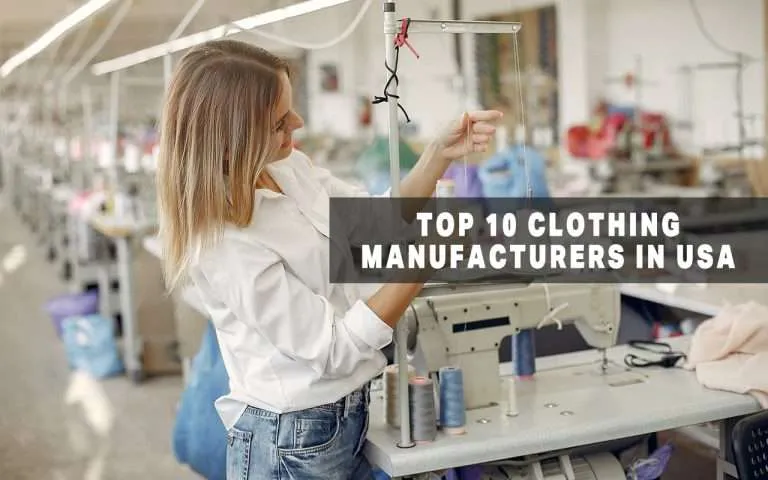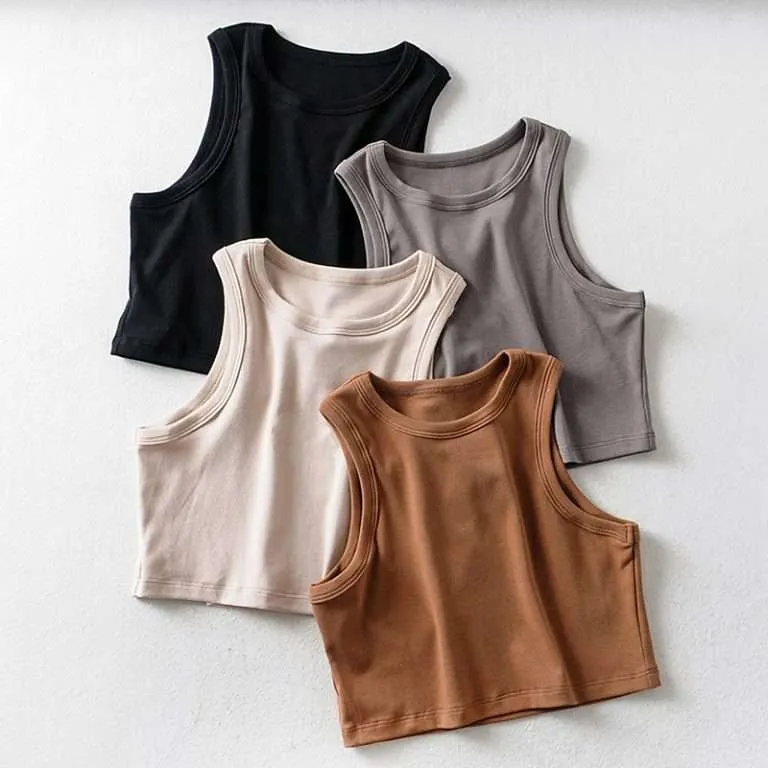Your Reliable High Quality Wholesale Custom Clothing Manufacturers

How to Vet Custom Clothing Suppliers: 5 Red Flags That Cost Brands $50k+ Yearly

Introduction
Choosing the right custom clothing supplier is crucial for your brand’s success. Research shows that making poor supplier choices can cost fashion brands over $50,000 each year due to quality problems, production delays, and hidden fees.
Partnering with the wrong supplier can result in:
- Damage to your brand reputation from inconsistent product quality
- Lost revenue because of missed seasonal launches
- Unexpected costs eating into your profit margins
- Disruptions in your supply chain that affect customer satisfaction
These challenges arise from five critical warning signs that many brands overlook when evaluating potential suppliers:
- Lack of operational transparency
- Unrealistic promises and pricing
- Poor communication practices
- Inadequate quality control
- Aggressive sales tactics
By understanding these red flags, brands can avoid expensive mistakes and build sustainable relationships with their suppliers. This guide goes into detail about each warning sign, offering practical strategies to protect your investment and ensure long-term success in custom clothing production.
Understanding the Custom Clothing Supply Chain
The custom clothing supply chain is a complex network of specialized entities working together to turn raw materials into finished garments. Each step requires precise coordination and expertise to maintain quality standards and meet production timelines.
Key Players in the Supply Chain:
- Raw Material Suppliers: Source and provide fabrics, threads, buttons, and other essential components
- Pattern Makers: Create technical specifications and size gradations
- Cut-and-Sew Facilities: Handle fabric cutting, garment assembly, and finishing
- Quality Control Teams: Inspect products at various production stages
- Logistics Partners: Manage warehousing and shipping operations
The success of a custom clothing project depends on the smooth collaboration between these entities. If there is a problem at any point, it can cause delays and increase costs.
Critical Supply Chain Components:
- Production planning and scheduling
- Material sourcing and inventory management
- Sample development and approval processes
- Quality assurance protocols
- Shipping and distribution systems
Reliable suppliers are experts in their specific role and communicate openly with other participants in the supply chain. They understand how their performance affects the entire production timeline and take proactive steps to avoid disruptions.
A trustworthy custom clothing supplier is a strategic partner who works with various stakeholders to ensure smooth operations. They have strong relationships with their sub-suppliers and backup plans for potential disruptions in the supply chain.
Red Flag 1: Lack of Transparency in Operations and Pricing
Transparency is crucial for successful supplier relationships in the custom clothing industry. A transparent supplier openly shares critical information about their manufacturing processes, pricing structures, and operational capabilities. This openness creates trust and enables brands to make informed decisions while preventing costly mistakes.
Hidden Costs That Drain Your Budget:
- Unexpected material surcharges
- Last-minute production fee increases
- Undisclosed shipping and handling costs
- Additional charges for quality control
- Sample development fees revealed late in the process
A lack of transparency can lead to production delays and budget overruns reaching $50,000 or more annually. These setbacks often stem from suppliers withholding crucial information about their production capacity, material sourcing methods, or potential supply chain disruptions.
Identifying Red Flags in Transparency
Watch for these warning signs during initial supplier interactions:
- Vague or inconsistent pricing explanations
- Reluctance to provide detailed production timelines
- Limited information about manufacturing facilities
- Unclear policies regarding minimum order quantities
- Resistance to sharing quality control procedures
Essential Questions to Ask Potential Suppliers:
- Production Capacity Assessment:“What is your monthly production capacity?”
- “How do you handle peak season demands?”
- “Can you provide a breakdown of your manufacturing processes?”
- Pricing Structure Clarity:“What factors influence your pricing model?”
- “Are there additional fees for design modifications?”
- “How do you handle price fluctuations in raw materials?”
- Quality Control Transparency:“What quality control measures do you implement?”
- “Can you share recent quality inspection reports?”
- “How do you track and resolve production issues?”
Documentation Requirements:
✓ Detailed price quotes with all cost components
✓ Written production schedules
✓ Quality control protocols
✓ Material sourcing documentation
✓ Compliance certificates
A trustworthy supplier provides comprehensive documentation without hesitation. They maintain open communication channels and respond promptly to inquiries about their operations, pricing, and production processes. This level of transparency helps brands avoid costly mistakes and build sustainable
Red Flag 2: Unrealistic Promises and Pricing Strategies That Raise Eyebrows
Custom clothing suppliers who present pricing structures significantly below market rates often mask underlying issues that can devastate brand budgets. A supplier offering prices 30-40% below industry standards raises immediate concerns about their ability to deliver quality products.
Common Unrealistic Promises to Watch For:
- “We can deliver 10,000 units in just two weeks”
- “Our prices are half the market rate with the same quality”
- “We never experience production delays”
- “Zero minimum order quantity with bulk pricing”
These enticing claims often lead to:
- Rushed production resulting in quality defects
- Hidden fees appearing mid-production
- Missed deadlines affecting retail launches
- Material substitutions without approval
A real-world example: A fashion brand lost $75,000 when their supplier promised a 3-week delivery for 5,000 custom jackets. The unrealistic timeline led to rushed production, resulting in 40% of the order being unsellable due to quality issues.
Evaluating Supplier Credibility Through Research And References
Thorough supplier verification requires systematic research across multiple channels:
Direct Reference Checks:
- Contact current clients listed as references
- Request samples from previous production runs
- Visit production facilities when possible
- Review financial stability reports
Online Research Tools:
- Trade directories (Alibaba, GlobalSources)
- Industry forums and discussion boards
- Professional networks (LinkedIn)
- Business registration databases
Industry Benchmark Analysis:
- Standard production timelines for specific garment types
- Average pricing ranges for materials and labor
- Typical minimum order quantities
- Common quality control processes
Red Flag Pricing Indicators:
- Quotes 30%+ below market average
- No detailed cost breakdowns
- Resistance to providing material specifications
- Unusual payment terms or requirements
Professional suppliers maintain transparent pricing structures and realistic production timelines based on their actual capacity. They provide detailed quotes breaking down material costs, labor, overhead, and profit margins. This level of openness allows brands to make informed decisions and avoid costly surprises during production.
Red Flag 3: Poor Communication Practices That Hinder Collaboration
Clear communication is essential for building successful relationships with suppliers in the custom clothing industry. When communication breaks down, it can lead to a series of problems such as production delays and expensive errors that directly affect your profits.
The True Cost of Poor Communication:
- Production delays resulting in missed seasonal launches
- Incorrect specifications leading to product waste
- Misaligned expectations causing budget overruns
- Lost sales opportunities due to delayed responses
- Damaged business relationships requiring new supplier searches
Signs Of Poor Communication Practices To Look Out For During The Vetting Process
1. Response Time Red Flags
- Emails taking longer than 24-48 hours for responses
- Missed calls without return communication
- Inconsistent availability during business hours
- Absence of emergency contact protocols
- Limited communication channels
2. Quality of Communication
- Vague or ambiguous responses to specific questions
- Language barriers without proper translation support
- Lack of detailed documentation
- Insufficient explanation of technical specifications
- Missing confirmation of received instructions
3. Communication Infrastructure
- No designated point of contact
- Absence of project management tools
- Limited digital communication capabilities
- No structured reporting system
- Poor record-keeping practices
Effective Supplier Assessment Strategies:
Pre-Partnership Communication Test
- Send test inquiries at different times
- Request detailed product specifications
- Ask for clarification on pricing structures
- Evaluate response comprehensiveness
- Monitor communication consistency
Professional Communication Standards
- Clear written correspondence
- Regular status updates
- Proactive problem-solving approach
- Documented meeting minutes
- Organized information sharing
Key Questions for Initial Discussions:
“What is your standard response time for urgent matters?”
“Which communication channels do you use?”
“Who will be our dedicated contact person?”
“How do you handle time zone differences?”
“What is your escalation process for critical issues?”
A supplier’s communication style during the vetting process reflects their operational approach. Professional suppliers maintain open lines of communication, provide clear information, and demonstrate reliability through consistent responsiveness.
Red Flag 4: Inadequate Quality Control Measures That Put Your Brand At Risk
Quality control measures are crucial for ensuring consistent products and maintaining a strong brand reputation in custom clothing manufacturing. A comprehensive quality control system includes thorough inspection procedures, documented standards, and rigorous testing protocols at every stage of production.
Risks of Working with Suppliers Lacking Quality Control
Brands that partner with suppliers who do not have proper quality control measures in place face several risks, including:
- Production inconsistencies – varying measurements, colors, and finishing across batches
- Material defects going unnoticed until reaching end customers
- Increased return rates leading to significant financial losses
- Damaged brand reputation through negative customer reviews
- Lost wholesale accounts due to substandard merchandise
The financial impact of poor quality control can quickly escalate beyond $50,000 annually through:
- Product recalls
- Customer refunds
- Inventory write-offs
- Emergency reorders
- Lost future sales
Key Questions Brands Should Ask Suppliers Regarding Their Quality Control Processes
When evaluating potential suppliers, brands should inquire about their quality control processes in the following areas:
Pre-Production Quality Checks
- What testing methods do you use for fabric quality assessment?
- How do you verify color consistency across different batches?
- What systems are in place for pattern accuracy verification?
During Production Monitoring
- How many quality checkpoints exist throughout the manufacturing process?
- What percentage of products undergo inspection during production?
- Who performs quality checks, and what is their qualification level?
Final Inspection Standards
- What is your Acceptable Quality Level (AQL) standard?
- How do you document and track quality issues?
- What is your protocol for addressing defects discovered during final inspection?
Recommended Inspection Protocols
Brands should request detailed documentation of these quality control processes and maintain regular communication regarding quality standards. A supplier’s willingness to share their quality control procedures and adapt to specific requirements indicates their commitment to maintaining high production
Red Flag 5: Aggressive Sales Tactics That Raise Alarm Bells
Aggressive sales tactics in custom clothing manufacturing often mask deeper issues within supplier operations. These high-pressure behaviors manifest in several concerning ways:
- Demanding Large Upfront Payments: Suppliers insisting on substantial deposits before providing detailed production plans
- Creating Artificial Urgency: Claims of “limited-time offers” or “exclusive deals” that expire within unreasonably short timeframes
- Pushing for Immediate Commitments: Reluctance to allow proper evaluation time or due diligence
- Withholding Critical Information: Refusing to provide detailed pricing breakdowns until after commitment
- Making Unrealistic Guarantees: Promises of impossibly fast turnaround times or below-market prices
These tactics can lead to severe consequences for brands:
- Production quality compromises
- Hidden fees emerging after contract signing
- Inflexible terms that favor the supplier
- Rushed decision-making resulting in costly mistakes
- Damaged business relationships
Strategies For Avoiding Coercive Sales Tactics And Making Informed Choices
Establish Clear Boundaries
- Set predetermined budget limits
- Create a structured timeline for supplier evaluation
- Document all communication and promises made
- Request written proposals for all verbal agreements
Implement a Strategic Negotiation Process
- Research market rates and standard terms
- Prepare detailed requirements before initial contact
- Involve multiple stakeholders in decision-making
- Request sample productions before large commitments
- Compare multiple supplier proposals simultaneously
Red Flag Response Protocol
When faced with pressure tactics:
- Request 24-48 hours consideration time
- Seek written confirmation of verbal promises
- Consult industry peers about typical terms
- Document all instances of aggressive behavior
Protection Measures
- Work with escrow services for initial orders
- Include clear quality standards in contracts
- Establish milestone-based payment structures
- Build relationships with backup suppliers
A professional supplier values long-term partnerships over quick sales. They understand the importance of allowing proper evaluation time and maintain transparency throughout negotiations. Brands should prioritize these qualities when selecting manufacturing partners.
Key Questions for Supplier Assessment
What is your standard payment structure?
Additional Considerations When Vetting Suppliers Beyond The Obvious Red Flags
Successful supplier vetting extends beyond identifying warning signs. A comprehensive evaluation process includes several critical verification steps that protect brands from potential losses and ensure long-term partnership success.
Certifications Verification: A Deep Dive
Industry certifications serve as tangible proof of a supplier’s commitment to quality and ethical standards. Key certifications to verify include:
- GOTS (Global Organic Textile Standard)
- Request original certification documents
- Cross-reference certification numbers with official databases
- Verify certification scope matches supplier claims
- Check expiration dates and renewal status
- OEKO-TEX Standard 100
- Examine certification levels (Class I-IV)
- Validate through the OEKO-TEX website
- Review specific product categories covered
- Confirm testing parameters align with your requirements
Document Authentication Process
Brands must implement a structured approach to certification verification:
- Request Original Documentation
- High-resolution copies of certificates
- Supporting test reports
- Scope certificates
- Transaction certificates for specific orders
- Direct Verification
- Contact certifying bodies directly
- Use official verification portals
- Document verification results
- Maintain records of all communication
Factory Visits: Beyond Virtual Tours
Physical factory inspections reveal crucial aspects often missed in digital communication:
Pre-Visit Planning
- Create a structured assessment checklist
- Schedule visits during peak production hours
- Request access to all relevant facilities
- Prepare specific questions about production capabilities
Key Areas to Assess During Visits
- Production line organization
- Quality control stations
- Worker conditions
- Raw material storage
- Finished product handling
- Waste management systems
Common Certification Red Flags
Watch for these warning signs during verification:
- Pixelated or low-quality certificate copies
- Inconsistent company names across documents
- Missing certification numbers
- Reluctance to provide additional verification
- Certificates without clear scope definitions
- Expired certifications with promises of renewal
Creating a Verification Timeline
Establish a structured timeline for certification verification:
- Initial document collection: 1-2 weeks
Benefits Of Conducting Factory Visits For Firsthand Assessments And Building Trust With Suppliers
Factory visits serve as a crucial step in vetting potential custom clothing suppliers, offering brands invaluable insights beyond digital communication and documentation. A physical inspection of manufacturing facilities reveals critical aspects of a supplier’s operations:
Key Areas to Assess During Factory Visits:
- Production capacity and equipment conditions
- Worker safety protocols and workplace environment
- Storage facilities for materials and finished products
- Quality control stations and testing procedures
- Real-time production workflow
Cultural Considerations for Factory Visits:
- Respect local customs and business etiquette
- Schedule visits during regular production hours
- Bring a translator if language barriers exist
- Follow facility protocols and safety guidelines
Physical visits enable brands to verify certifications displayed at the facility, such as GOTS, OEKO-TEX, or ISO standards. These certifications should match the documentation provided during initial discussions.
Client Reference Verification Process:
- Request contact information for at least three previous clients
- Focus on clients with similar production volumes
- Ask about specific challenges and how they were resolved
- Verify order completion timelines and quality consistency
- Inquire about post-sale support and communication
Red Flags in Client References:
- References unwilling to provide detailed feedback
- Inconsistent information between different references
- Only providing references from short-term relationships
- Unable to connect with listed references
- References reporting frequent quality issues
Building trust through factory visits creates stronger supplier relationships. Direct interaction with factory management and workers provides authentic insights into their operational capabilities and commitment to quality. These visits also demonstrate your brand’s dedication to maintaining high standards and fostering transparent partnerships.
Physical inspections help identify potential issues early in the relationship, preventing costly mistakes and ensuring alignment with your brand’s quality requirements and ethical standards.
Protecting Against Financial Losses Through Secure Payments Methods And Clear Terms Of Agreement With Suppliers
Establishing robust payment protocols safeguards brands from potential financial losses when working with custom clothing suppliers. Here’s a comprehensive approach to secure transactions:
Essential Payment Terms to Include in Agreements:
- Detailed cost breakdowns per unit
- Production timeline-linked payment schedules
- Quality inspection requirements before payments
- Currency exchange rate specifications
- Return and refund policies
- Late delivery penalties
Recommended Secure Payment Methods:
- Letter of Credit (LC): Banks act as intermediaries, releasing funds only when specific conditions are met
- Escrow Services: Third-party holds funds until contractual obligations are fulfilled
- Trade Assurance: Platforms like Alibaba offer built-in protection for qualified transactions
- Documentary Collection: Banks facilitate document exchange before payment release
Risk Mitigation Strategies:
- Start with smaller order quantities to test supplier reliability
- Document all payment-related communications
- Use tracked international wire transfers
- Implement milestone-based payments
- Request samples before bulk production payments
- Maintain detailed records of all transactions
Red Flag Payment Practices to Avoid:
- Requests for full upfront payments
- Pressure to use unofficial payment channels
- Resistance to standard payment protection measures
- Unclear or constantly changing payment terms
Working with suppliers who accept secure payment methods demonstrates their commitment to professional business practices and reduces the risk of financial losses in custom clothing production.
FAQs (Frequently Asked Questions)
What are the key red flags to watch for when vetting custom clothing suppliers?
When vetting custom clothing suppliers, look out for five key red flags: lack of transparency in operations and pricing, unrealistic promises and pricing strategies, poor communication practices, inadequate quality control measures, and aggressive sales tactics. Each of these can lead to significant financial losses for your brand.
Why is transparency important in supplier relationships?
Transparency is crucial as it helps build trust between brands and suppliers. A lack of transparency can lead to hidden costs, production delays, and misunderstandings that could cost brands over $50k annually. It’s essential to ask potential suppliers detailed questions about their operations and pricing structures.
How can I identify unrealistic promises made by suppliers?
Unrealistic promises often manifest as significantly lower prices than industry standards or overly optimistic delivery timelines. To assess credibility, research the supplier’s track record and gather customer feedback to ensure their promises align with industry benchmarks.
What should I do if a supplier demonstrates poor communication practices?
If you notice slow responses or unclear messaging during initial interactions with a supplier, this may indicate poor communication practices. It’s important to gauge their responsiveness early on as effective communication is vital for smooth operations throughout the production process.
How can inadequate quality control measures affect my brand?
Inadequate quality control can lead to inconsistent product quality, resulting in increased returns and negative customer reviews. Brands should ask suppliers about their quality assurance processes and implement recommended inspection protocols to minimize defects before shipment.
What steps should I take beyond identifying red flags when vetting suppliers?
Beyond identifying red flags, it’s essential to verify industry certifications claimed by potential suppliers and seek client references from previous customers. Conducting factory visits can also provide firsthand insights into a supplier’s capabilities and help build trust.






